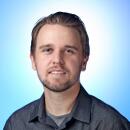To meet next-gen standards, integrated science course OK’d by Laguna Beach school board

- Share via
A new look at science education has seen the Laguna Beach Unified School District bring like subject matter under a collective banner.
Looking to satisfy next-generation science standards, the district transitioned away from the traditional science learning pathway that saw high school students take biology, followed by chemistry and physics. Integrated science courses took their place.
During the pandemic, incoming freshmen for the class of 2024 became the first to take the new course of study. Integrated Science I started students off with a physical science course.
Those same students took Integrated Science II, which focused on life science, their sophomore year.
Now approaching the third year since introducing the science pathway to the high school, the district is prepared to offer Integrated Science III as an elective for students wishing to go further in their exploration of the physical world.
The class will provide students with a “deeper understanding of how their bodies, minds and planet works in regards to mechanics and energy,” according to a course description provided to the district’s board of education, which on Tuesday voted 4-1 to approve the proposed course of study for the district’s secondary schools.
While the course offering allows for students to continue down the science learning pathway without specialization, upperclassmen have opportunities to pursue individual interests in classes such as AP biology, AP physics, marine ecology and engineering.
“Integrated Science II is life science heavy,” Chad Mabery, assistant superintendent of instructional services for the district, said. “… This is the first year that we’ve had Integrated Science II, so kids would take AP bio[ology] next year following that course, so it kind of fits very nice that they’re consecutive years for kids who are interested in that.”
Mabery said the district would offer a summer enrichment course for students heading into advanced placement classes, including AP biology.
Board member Dee Perry, who cast the dissenting vote, cast some doubt the integrated science courses were meeting the needs of students who turn their focus towards a particular STEM field, contending that those students are looking for a stronger foundation in specific subject matter.
“For the students who wish to go on in science and pursue careers in STEM, they don’t feel there’s enough basic information for a solid foundation in biology, in chemistry, in physics for the AP classes,” Perry said. “Parents have told me that they are expected to either get tutors for their students or find an online or a community college class for their child, because our district is not offering the basic background classes, but maybe this bridge bio[logy] course in the summer will do that.”
Although the high school has faced declining enrollment, Supt. Jason Viloria said there were 81 students that had signed up for AP biology for the upcoming school year, with about 40 students set to take AP physics.
“[The science standards] are driven by employed scientists and science professionals and educators and the state board of education, and next-gen science standards call for integration and cross-cutting concepts, along with lots of other good things that they’ve done, with science and engineering practices and all those connections,” board clerk Kelly Osborne, who previously served on the district’s curriculum council, said. “I think we would be remiss to say that we can’t go in the direction of integrated science because some students are struggling when they move on to AP Bio[ology].”
Osborne added that the next generation science standards push students further toward being able to engage in real-world application of science.
Laguna Beach High School science teachers worked to develop the curriculum for the integrated science courses.
“I would be excited to teach AP bio to students who have taken Integrated Science II,” Steve Sogo, an Integrated Science I and advanced chemical research teacher at the high school, said in a statement. “They have been trained to think, to ask questions, and they understand how chemistry and biology are inextricably linked. They are ready to do science instead of just memorizing words.”
All the latest on Orange County from Orange County.
Get our free TimesOC newsletter.
You may occasionally receive promotional content from the Daily Pilot.









